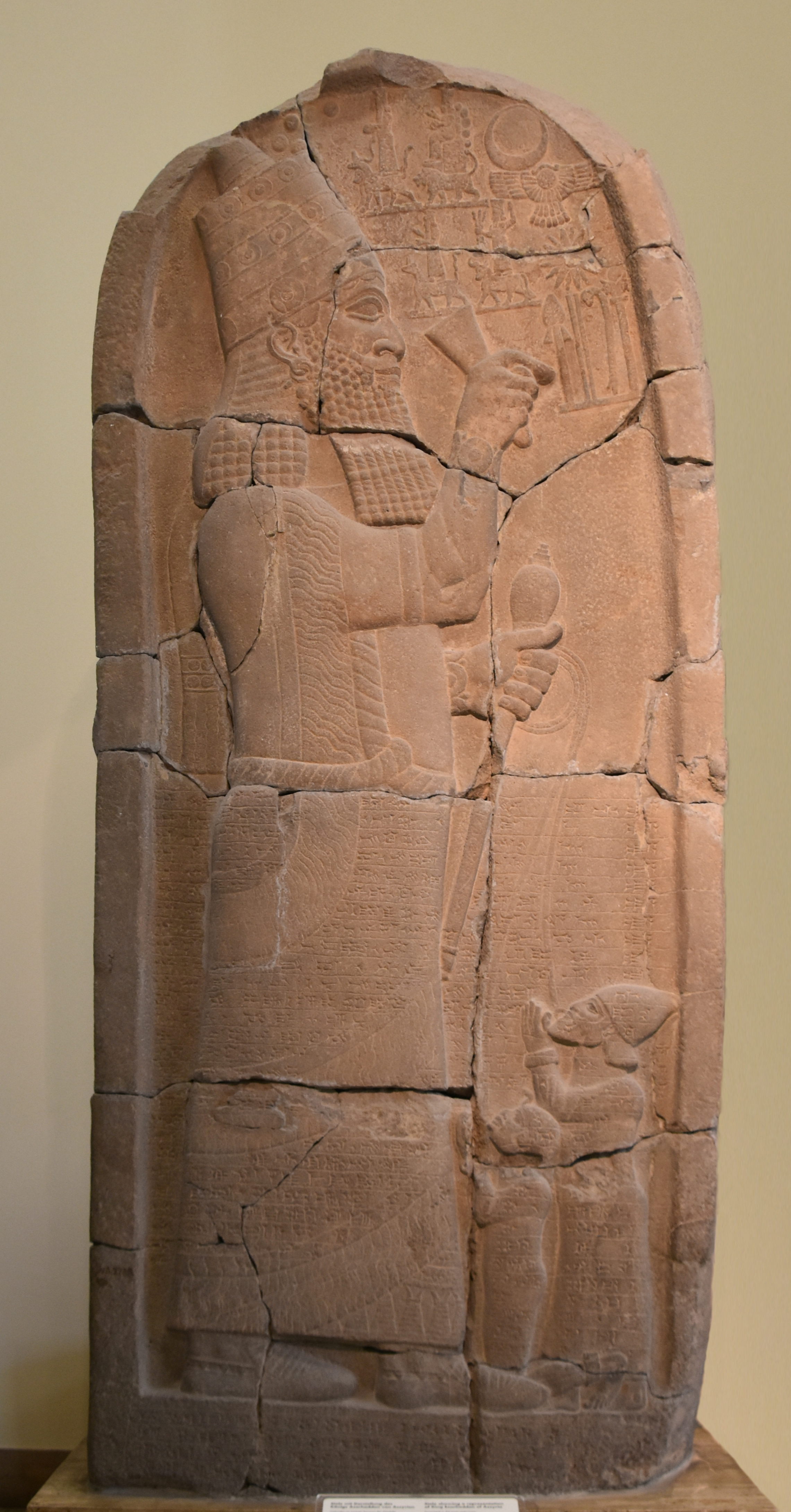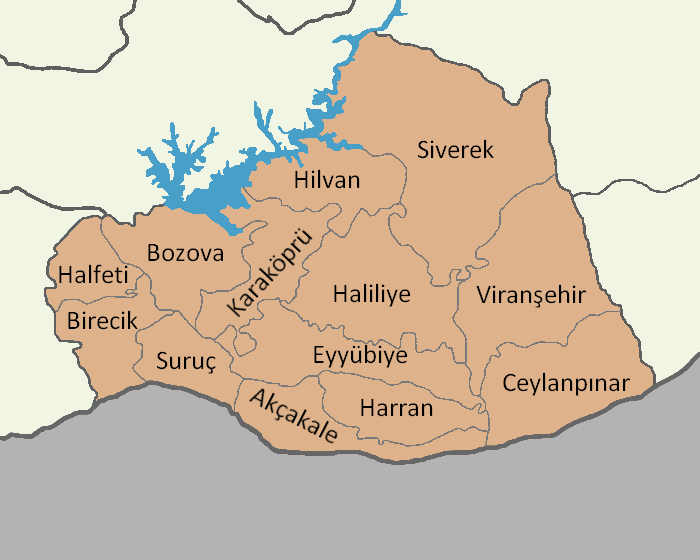|
Assarhaddon
Esarhaddon, also spelled Essarhaddon, Assarhaddon and Ashurhaddon (Neo-Assyrian cuneiform: , also , meaning "Ashur has given me a brother"; Biblical Hebrew: ''ʾĒsar-Ḥaddōn'') was the king of the Neo-Assyrian Empire from the death of his father Sennacherib in 681 BC to his own death in 669. The third king of the Sargonid dynasty, Esarhaddon is most famous for his conquest of Egypt in 671 BC, which made his empire the largest the world had ever seen, and for his reconstruction of Babylon, which had been destroyed by his father. After Sennacherib's eldest son and heir Ashur-nadin-shumi had been captured and presumably executed in 694, the new heir had originally been the second eldest son, Arda-Mulissu, but in 684, Esarhaddon, a younger son, was appointed instead. Angered by this decision, Arda-Mulissu and another brother, Nabu-shar-usur, murdered their father in 681 and planned to seize the Assyrian throne. The murder, and Arda-Mulissu's aspirations of becoming king himsel ... [...More Info...] [...Related Items...] OR: [Wikipedia] [Google] [Baidu] |
Pergamon Museum
The Pergamon Museum (; ) is a listed building on the Museum Island in the historic centre of Berlin. It was built from 1910 to 1930 by order of German Emperor Wilhelm II according to plans by Alfred Messel and Ludwig Hoffmann in Stripped Classicism style. Landesdenkmalamt Berlin As part of the Museum Island complex, the Pergamon Museum was inscribed on the in 1999 because of its architecture and testimony to the evolution of museums as architectural and social phenomena. [...More Info...] [...Related Items...] OR: [Wikipedia] [Google] [Baidu] |
Victory Stele Of Esarhaddon
The Victory stele of Esarhaddon (also Zenjirli or Zincirli stele) is a dolerite stele commemorating the return of Esarhaddon after his army's 2nd battle and victory over Pharaoh Taharqa in northern ancient Egypt in 671 BC. It was discovered in 1888 in Zincirli Höyük (Sam'al, or Yadiya) by Felix von Luschan and Robert Koldewey. It is now in the Pergamon Museum in Berlin. The prior battle of 674 BC was won by Taharqa, who confronted Esarhaddon after his initial foray into the Levant;''Black Pharaohs,'' ''National Geographic Magazine'', February, 2008, p. 58. Esarhaddon then entered northern Egypt but was repulsed by Taharqa's forces. The second battle of 671 BC saw Taharqa retreat with his army to Memphis; Memphis was taken with Taharqa then fleeing to the Kingdom of Kush. With Esarhaddon's victory he: "slaughtered the villagers and 'erected piles of their heads'", As Esarhaddon wrote later: : Memphis, his royal city, in half a day , with mines, tunnels, assaults, I besieged, ... [...More Info...] [...Related Items...] OR: [Wikipedia] [Google] [Baidu] |
List Of Assyrian Kings
The king of Assyria (Akkadian: ''Išši'ak Aššur'', later ''šar māt Aššur'') was the ruler of the ancient Mesopotamian kingdom of Assyria, which was founded in the late 21st century BC and fell in the late 7th century BC. For much of its early history, Assyria was little more than a city-state, centered on the city Assur, but from the 14th century BC onwards, Assyria rose under a series of warrior kings to become one of the major political powers of the Ancient Near East, and in its last few centuries it dominated the region as the largest empire the world had seen thus far. Ancient Assyrian history is typically divided into the Old, Middle and Neo-Assyrian periods, all marked by ages of ascendancy and decline. The ancient Assyrians did not believe that their king was divine himself, but saw their ruler as the vicar of their principal deity, Ashur, and as his chief representative on Earth. In their worldview, Assyria represented a place of order while lands not governed by ... [...More Info...] [...Related Items...] OR: [Wikipedia] [Google] [Baidu] |
Şanlıurfa Province
Şanlıurfa Province ( tr, Şanlıurfa ili; ku, Parêzgeha Rihayê) or simply Urfa Province is a province in southeastern Turkey. The city of Şanlıurfa is the capital of the province which bears its name. The population is 1,845,667 (2014). The province is considered part of Turkish Kurdistan and has a Kurdish majority with a significant Arab and Turkish minority. Districts Şanlıurfa province is divided into 13 districts (capital district in bold): * Urfa (Central district. In 2014 it was split into three districts: Eyyübiye, Haliliye and Karaköprü.) * Akçakale * Birecik * Bozova * Ceylanpınar * Halfeti * Harran * Hilvan * Siverek * Suruç * Viranşehir Geography Area 18,584 km2 (7,173 sq. miles), the largest province of Southeast Anatolia with: * Adıyaman to the north; * Syria to the south; * Mardin and Diyarbakır to the east; * Gaziantep to the west; Şanlıurfa includes several major components of the Southeastern Anatolia Project (in T ... [...More Info...] [...Related Items...] OR: [Wikipedia] [Google] [Baidu] |
Biblical Hebrew
Biblical Hebrew (, or , ), also called Classical Hebrew, is an archaic form of the Hebrew language, a language in the Canaanite branch of Semitic languages spoken by the Israelites in the area known as the Land of Israel, roughly west of the Jordan River and east of the Mediterranean Sea. The term "Hebrew" (''ivrit'') was not used for the language in the Bible, which was referred to as (''sefat kena'an'', i.e. language of Canaan) or (''Yehudit'', i.e. Judaean), but the name was used in Ancient Greek and Mishnaic Hebrew texts. The Hebrew language is attested in inscriptions from about the 10th century BCE, and spoken Hebrew persisted through and beyond the Second Temple period, which ended in the siege of Jerusalem (70 CE). It eventually developed into Mishnaic Hebrew, spoken up until the fifth century CE. Biblical Hebrew as recorded in the Hebrew Bible reflects various stages of the Hebrew language in its consonantal skeleton, as well as a vocalizat ... [...More Info...] [...Related Items...] OR: [Wikipedia] [Google] [Baidu] |
Ashur (god)
Ashur, Ashshur, also spelled Ašur, Aššur (Sumerian: AN.ŠAR₂, Assyrian cuneiform: , also phonetically ) is a god of the ancient Assyrians and Akkadians, and the head of the Assyrian pantheon in Mesopotamian religion, who was worshipped mainly in northern Mesopotamia, and parts of north-east Syria and south-east Asia Minor which constituted old Assyria. He may have had a solar iconography. Legend Aššur was a deified form of the city of Assur, which dates from the mid 3rd millennium BC and was the capital of the Assyria, Old Assyrian kingdom. As such, Ashur did not originally have a family, but as the cult came under southern Mesopotamian influence, he later came to be regarded as the Assyrian equivalent of Enlil, the chief god of Nippur. Enlil was the most important god of the southern pantheon from the early 3rd millennium BC until Hammurabi founded an empire based in Babylon in the mid-18th century BC, after which Marduk replaced Enlil as the chief god in the south ... [...More Info...] [...Related Items...] OR: [Wikipedia] [Google] [Baidu] |
Assyrian Cuneiform U1223E MesZL 110
Assyrian may refer to: * Assyrian people, the indigenous ethnic group of Mesopotamia. * Assyria, a major Mesopotamian kingdom and empire. ** Early Assyrian Period ** Old Assyrian Period ** Middle Assyrian Empire ** Neo-Assyrian Empire * Assyrian language (other) * Assyrian Church (other) * SS ''Assyrian'', several cargo ships * ''The Assyrian'' (novel), a novel by Nicholas Guild * The Assyrian (horse), winner of the 1883 Melbourne Cup See also * Assyria (other) * Syriac (other) * Assyrian homeland, a geographic and cultural region in Northern Mesopotamia traditionally inhabited by Assyrian people * Syriac language, a dialect of Middle Aramaic that is the minority language of Syrian Christians * Upper Mesopotamia Upper Mesopotamia is the name used for the uplands and great outwash plain of northwestern Iraq, northeastern Syria and southeastern Turkey, in the northern Middle East. Since the early Muslim conquests of the mid-7th century, ... [...More Info...] [...Related Items...] OR: [Wikipedia] [Google] [Baidu] |
Assyrian Cuneiform U1227D MesZL 92
Assyrian may refer to: * Assyrian people, the indigenous ethnic group of Mesopotamia. * Assyria, a major Mesopotamian kingdom and empire. ** Early Assyrian Period ** Old Assyrian Period ** Middle Assyrian Empire ** Neo-Assyrian Empire * Assyrian language (other) * Assyrian Church (other) * SS ''Assyrian'', several cargo ships * ''The Assyrian'' (novel), a novel by Nicholas Guild * The Assyrian (horse), winner of the 1883 Melbourne Cup See also * Assyria (other) * Syriac (other) * Assyrian homeland, a geographic and cultural region in Northern Mesopotamia traditionally inhabited by Assyrian people * Syriac language, a dialect of Middle Aramaic that is the minority language of Syrian Christians * Upper Mesopotamia * Church of the East (other) Church of the East, also called ''Nestorian Church'', an Eastern Christian Christian denomination, denomination formerly spread across Asia, separated since the schism of 1552. Church of the E ... [...More Info...] [...Related Items...] OR: [Wikipedia] [Google] [Baidu] |
Assyrian Cuneiform U1212D MesZL 631 Or U122B9 MesZL 632 And MesZL 633
Assyrian may refer to: * Assyrian people, the indigenous ethnic group of Mesopotamia. * Assyria, a major Mesopotamian kingdom and empire. ** Early Assyrian Period ** Old Assyrian Period ** Middle Assyrian Empire ** Neo-Assyrian Empire * Assyrian language (other) * Assyrian Church (other) * SS ''Assyrian'', several cargo ships * ''The Assyrian'' (novel), a novel by Nicholas Guild * The Assyrian (horse), winner of the 1883 Melbourne Cup See also * Assyria (other) * Syriac (other) * Assyrian homeland, a geographic and cultural region in Northern Mesopotamia traditionally inhabited by Assyrian people * Syriac language, a dialect of Middle Aramaic that is the minority language of Syrian Christians * Upper Mesopotamia * Church of the East (other) Church of the East, also called ''Nestorian Church'', an Eastern Christian Christian denomination, denomination formerly spread across Asia, separated since the schism of 1552. Church ... [...More Info...] [...Related Items...] OR: [Wikipedia] [Google] [Baidu] |




